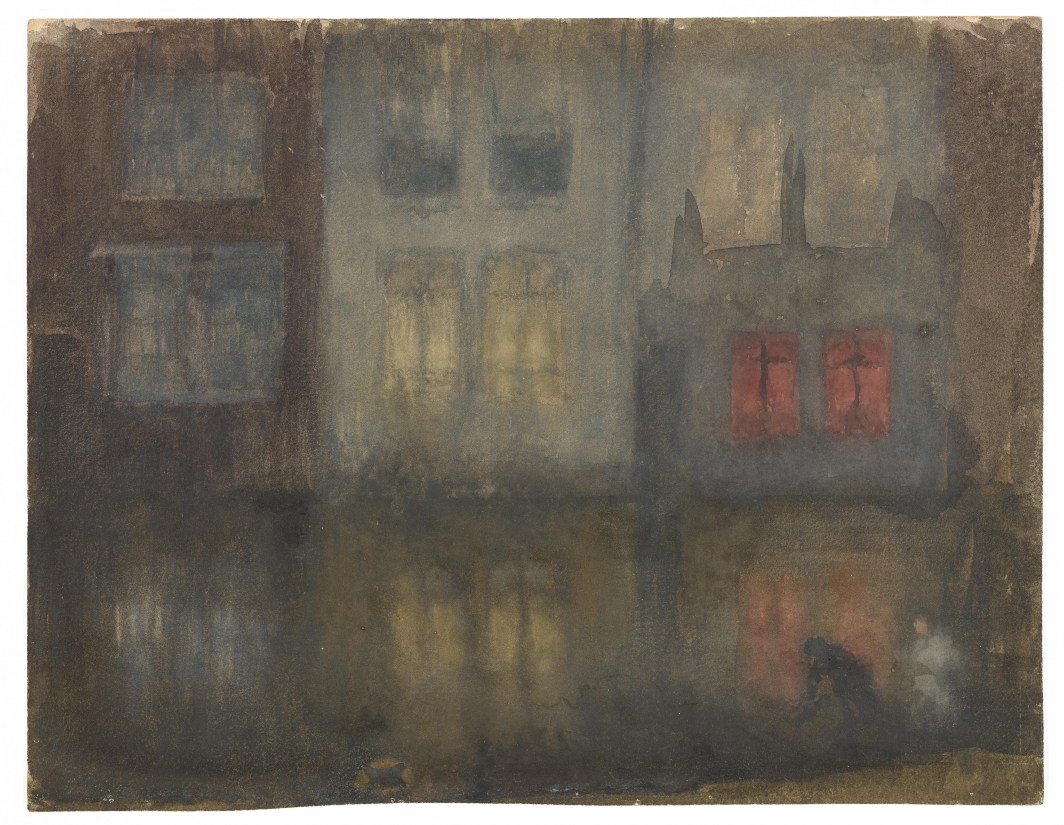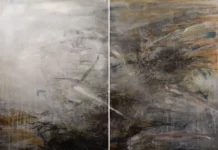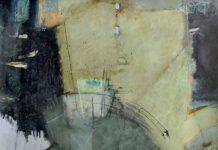James McNeill Whistler painted street scenes of daily life throughout his career, from the quiet village of Saverne and a busy flower market in northern France, to the children in his London neighborhood and his “nocturnes” along Amsterdam’s canals. Through these watercolors, as well as his etchings, pastels, and oil paintings, Whistler conveyed the rapid changes in city life.

Working in London, the artist focused on the rickety houses and small businesses along Cheyne Walk in the Chelsea neighborhood, where he lived for many years. These scenes not only appealed to Victorian critics and art collectors, but they also provided subtle allusions to social and economic realities. In Chelsea Children, a child looks longingly into a shop window advertising stewed eels, an inexpensive meal favored by the poor. These local shops disappeared as cities developed and large-scale department stores became more prevalent.
The watercolors that resulted from his 1882 trip to Amsterdam are among Whistler’s most experimental works. Maintaining a wet surface while he worked, the artist rubbed and scraped the paper to achieve his desired effects. Whistler explained that he chose the word “nocturne” to describe his night scenes because “it generalizes and simplifies the whole set of them.” Despite their differences in scale, location, subject matter, and medium, all of his nocturnes focus on complicated patterns of color and tone.

Through these stylistic and thematic approaches that captured the developing urban character, Whistler painted an enchanting portrait of European street life.
Museum founder Charles Lang Freer amassed the world’s largest collection of Whistler’s watercolors, with more than 50 seascapes, nocturnes, interior views, and street scenes. His vast collection also included prints, drawings, pastels, and oil paintings by the artist. Due to Freer’s will, these works have never left the museum, and the fragile watercolors have rarely been displayed. Recent research conducted by museum curators, scientists, and conservators now shines new light on Whistler’s materials, techniques, and artistic genius, as seen in this first major exhibition of his watercolors at the Freer Gallery since the 1930s.

“Whistler in Watercolor” will be on display through, November 3, 2019, at the Freer galleries, Washington, D.C.







